TL;DR
The best way to create a landscape plan is to map your site, solve drainage first, define zones (entry, social, service, quiet), and test layouts before you buy plants. Use a long-tail landscaping design tool like ReimagineHome.ai to visualize path widths, patio sizes, and low-maintenance plant masses from a single photo. This approach protects your budget, works for small yards, and reduces upkeep while improving privacy and curb appeal. Try it here: ReimagineHome.ai.
Why Outdoor Design and Curb Appeal Matter Right Now

Proper path width and drainage form the foundation of low-maintenance landscaping design.
Primary garden paths typically range from 36–48 inches wide for comfortable use and clear circulation. A strong landscape plan starts with simple measurements, predictable walkway widths, and a drainage-first mindset that protects your foundation and guides rain where it should go. Combine these rules-of-thumb with layered planting and durable hardscaping, and you’ll gain low-maintenance landscaping that boosts curb appeal, improves privacy, and feels good every day—without overspending on plants or guesswork.
Why Landscaping, Gardening & Hardscaping Are Changing

Growing emphasis on hardscaping transforms yards into functional, low-maintenance living spaces.
Hardscape elements often account for 50–70% of a low-maintenance yard budget, because patios, paths, steps, and edging set the structure that plants grow into. Today’s landscape design must answer hotter summers, irregular rainfall, and work-from-home lifestyles that put more pressure on outdoor living. Efficient irrigation, drought-tolerant and native planting, shade strategy, and smart lighting now sit alongside modern curb appeal and resale value. Homeowners want layouts that flow, materials that last, and gardens that look good with less work—especially in small backyard spaces. That’s why a plan comes first: measure, grade for water, right-size gathering areas, then layer plants by height and sun tolerance. These simple steps save both time and money.
Anecdote
A homeowner with a deep 20-foot foundation bed used photo visualization to compare “classic” boxwood edging with a lower-water alternative. The tool revealed that spacing boxwood at 24 inches on center and setting a gravel maintenance strip would cut pruning time in half—without losing the formal line.
Key Landscaping & Hardscaping Trends (and How ReimagineHome.ai Shows Them)
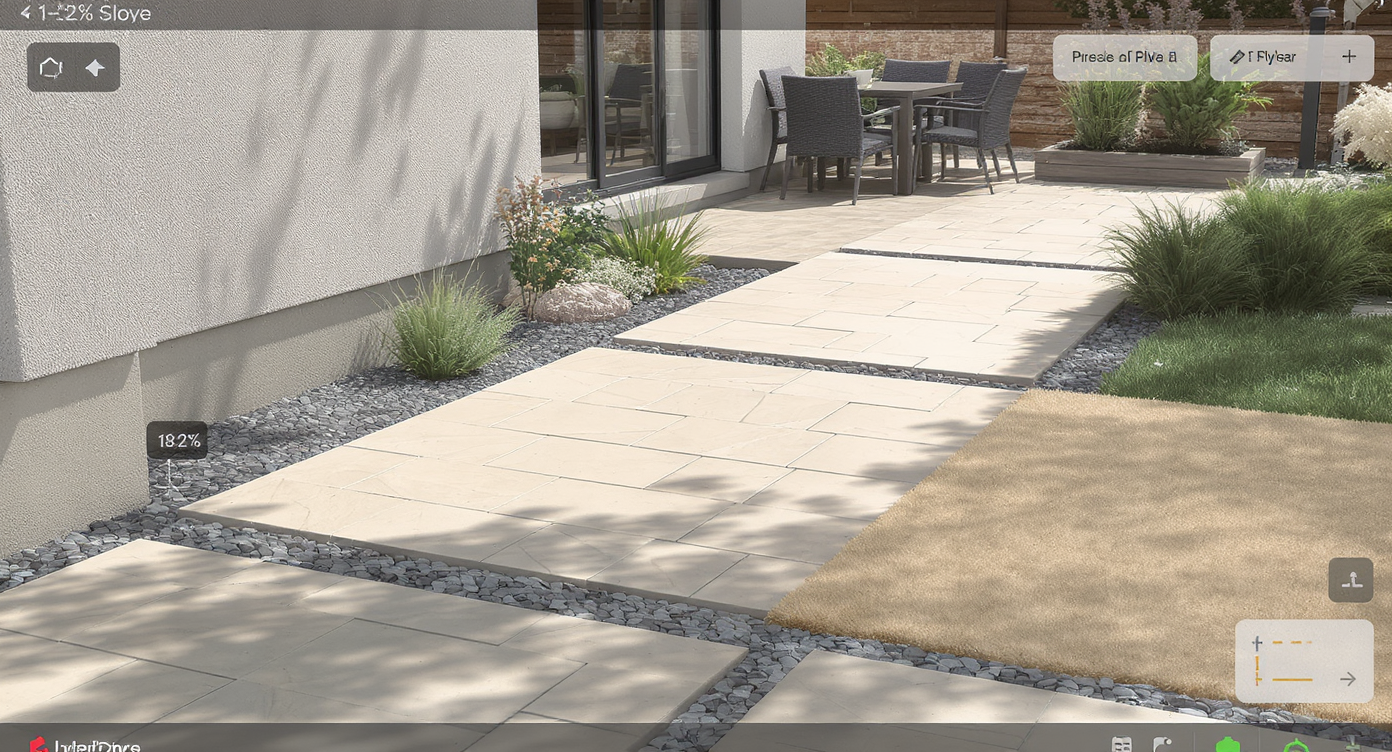
Precision grading and planting create beautiful drainage and airflow proven by visualization tools.
Experts recommend a 1–2% slope for patios and walks for proper drainage without feeling tilted. That single number prevents puddles, slippery winters, and undermined edges—and it’s easy to preview visually before you build. - Layered planting and year-round structure - Stone, gravel, and stepping-stone paths - Outdoor rooms, seating pockets, fire pits - Drought-tolerant and native planting layouts - Modern curb appeal changes that boost value ReimagineHome.ai lets you upload a photo and preview materials, lighting, grading cues, and planting massing before you commit. See how a crushed-gravel side path meets a concrete patio; compare a 10×12 vs. 12×16 entertaining zone; test taller hedges for privacy; and visualize evening path lights. You’ll notice how shadows fall, where a low seat wall could double as extra dining seating, and how a few evergreen anchors keep the garden looking designed in winter. It’s a fast way to choose a cohesive palette and avoid over-planting.
How to Use ReimagineHome.ai to Visualize Yards, Paths & Patios
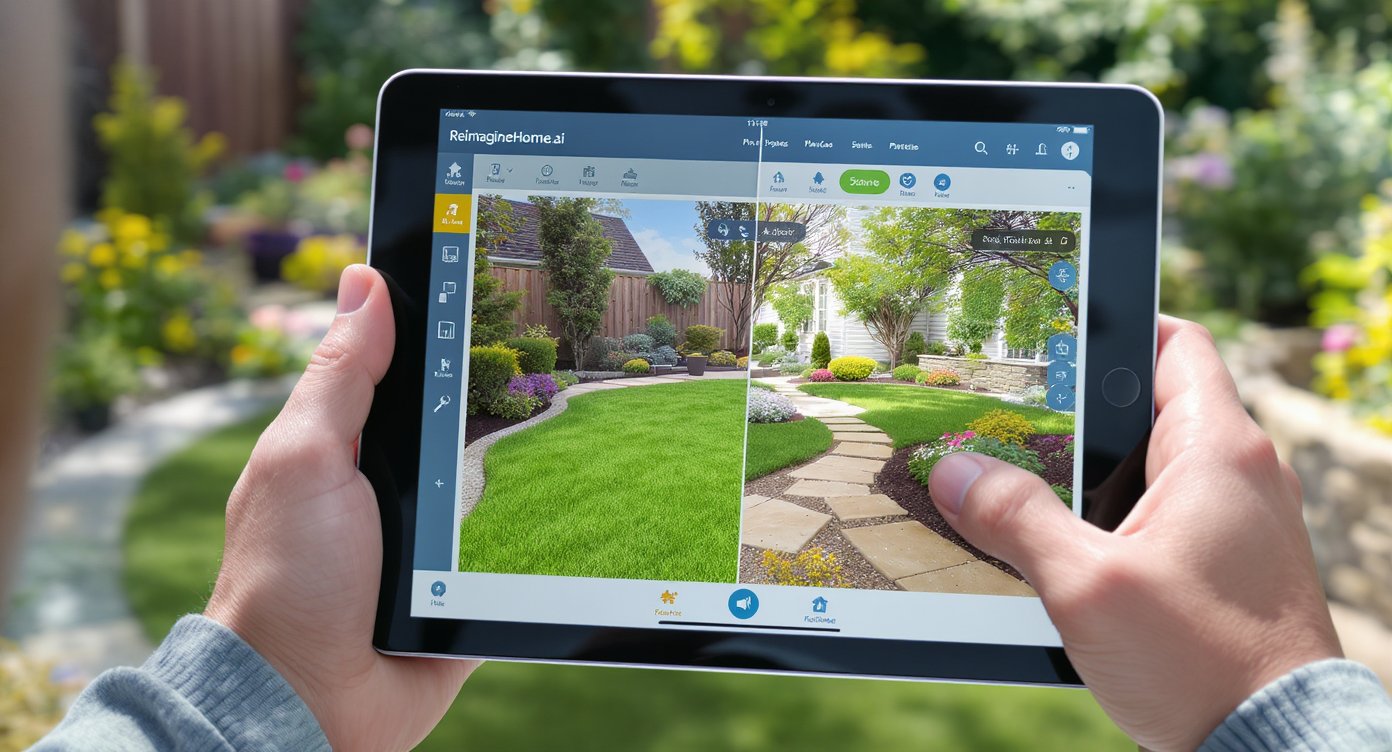
ReimagineHome.ai empowers homeowners to visualize and plan functional yard upgrades effortlessly.
For airflow and maintenance, shrubs should be planted 18–24 inches from foundations so foliage never traps moisture against siding. 1. Upload a clear exterior or yard photo. 2. Pick a style or function (low-maintenance, modern, family-friendly, pollinator, or “formal garden with boxwood” for classic structure). 3. Test path shapes, patio sizes, steps, and terraces; aim for 36–48-inch primary paths and 24–30-inch garden access paths. 4. Experiment with planting layers, lighting, and focal points; group plants in drifts of 3–5 for impact and easier watering. 5. Generate multiple versions and compare before committing; choose the design with the best water flow, sunlight fit, and year-round appeal.
Real-World Stories — Landscaping & Hardscaping in Action

Thoughtful yard upgrades boost perceived home value and create inviting outdoor living spaces.
Thoughtful front yard upgrades can increase perceived home value by as much as 7% by improving first impressions, lighting, and layout clarity. - A small urban yard redesigned with raised beds and stepping stones for usable space. The 24-inch access paths kept maintenance simple, and a 4×8 raised bed grid created rhythm; ReimagineHome.ai confirmed the bed count before any lumber was cut. Outcome: fewer materials, no wasted soil, and tidy circulation after rain. - A seller improving curb appeal ahead of listing. A 12×16 patio was downsized to 10×14 to fund lighting and a new front walk widened to 42 inches. The preview showed better evening photos and safer footing. Outcome: the home photographed brighter, felt larger on arrival, and stayed within budget. - A family yard transformed for play, privacy, and low upkeep. A 1–2% graded lawn swale captured downspout runoff, while a native screen (wax myrtle and evergreen viburnum) set at 30 inches on center delivered a green backdrop. Outcome: dry play area, lower watering needs, and a calm view from the kitchen.
Visualization Scenario
Upload a front elevation photo, draw a 42-inch front walk, and place a 10×14 landing at the stoop. Test warm LED path lights at 12–18 inches high and preview a native evergreen hedge 30 inches on center. Compare with a simplified plan using fewer plants but stronger massing.
FAQ
- How do I design a small backyard layout? A: Start with a simple 10×12 or 12×16 patio for dining, keep primary paths 36–42 inches wide, and use vertical elements (trellises, slim trees) for privacy. Group plants in fewer, larger masses to reduce maintenance. - How do I create low-maintenance landscaping? A: Limit materials to 2–3, choose drought-tolerant or native plants, use drip irrigation, and mulch 2–3 inches. Evergreen structure (boxwood, holly, juniper) plus seasonal perennials delivers color without weekly work. - Can I preview landscaping ideas using a photo? A: Yes—upload a snapshot to ReimagineHome.ai to test patios, paths, grading hints, planting layers, and lighting options before you spend. - How far should shrubs be from my foundation? A: Maintain 18–24 inches from siding and plant trees at least 10–15 feet away, depending on mature canopy. - What materials work best for modern hardscaping? A: Concrete, large-format pavers, natural stone, and gravel mix well. Rule-of-thumb: choose one primary surface and one accent, then repeat to keep the palette cohesive.
Visualize Your Home’s Next Chapter
Seat walls are most comfortable at 17–19 inches high, a detail that turns a retaining edge into overflow seating on summer nights. Combine those human-scaled rules with a restrained plant palette and you’ll create a yard that works in morning light, after-school play, and quiet evening dinners. You’ll notice how gravel crunches underfoot, how boxwood edges hold a classic line, and how seasonal color pops against stone. Before you break ground, explore every possibility. Try ReimagineHome.ai with a single photo.
.svg)

.svg)


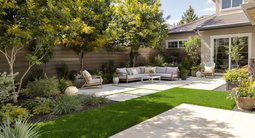
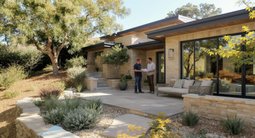


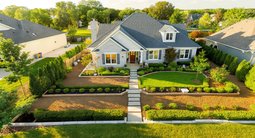
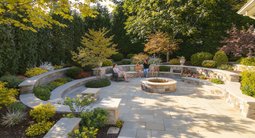


.png)